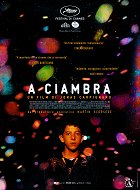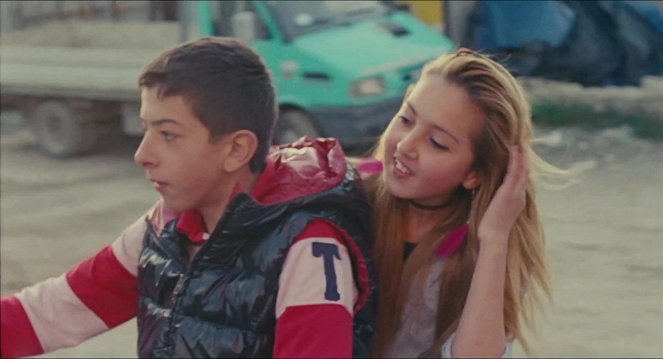Ohjaus:
Jonas CarpignanoKäsikirjoitus:
Jonas CarpignanoKuvaus:
Tim CurtinSävellys:
Dan RomerNäyttelijät:
Pio Amato, Koudous Seihon, Damiano Amato, Iolanda Amato, Patrizia Amato, Susanna Amato, Rocco Amato, Francesco Pio Amato, Damiano Nicolas Amato (lisää)Suoratoistopalvelut (1)
Juonikuvaukset(1)
Romanipoika Pio (Pio Amato) juo, polttaa ja rötöstelee kuin vanha tekijä. Omasta mielestään hän on jo mies, jonka täytyy todistaa isoveli Cosimolle pärjäävänsä satamakaupungin armottomilla kaduilla. Lopulta 14-vuotias Pio joutuu tekemään ratkaisun, josta ei ole paluuta.
A Ciambra pohjautuu ohjaaja-käsikirjoittaja Jonas Carpignanon samannimiseen lyhytelokuvaan vuodelta 2014. Lisäksi se on itsenäistä jatkoa hänen läpimurtoelokuvalleen Mediterranea joka sijoittui samaan eteläitalialaiseen Gioia Tauron kaupunkiin. Kaupungin laitamia asuttavat romanivähemmistö, pakolaiset sekä Afrikan mantereelta saapuneet maahanmuuttajat. Carpignanon katse on humaanin tarkkailijan. Hän ei sorru sentimentaalisuuteen eikä moralisointiin. Neorealistisen perinteen hengessä Pion koko perhe on roolitettu elokuvaan, ja kaikki näyttelevät versioita itsestään. A Ciambra yhdistää dokumentaarisuuden ja fiktiivisen kerronnan erottamattomaksi kokonaisuudeksi ja avaa ikkunan niiden ihmisten elämiin, jotka muu yhteiskunta mieluiten jättäisi näkemättä. Selviytyäkseen marginaalissa jokainen tekee sen, mikä täytyy. Mutta onko eloonjäämistaistelussa sijaa lojaaliudelle?
Annu Suvanto
(Helsinki International Film Festival)
Videot (3)
Arvostelut (2)
Set in the Roma community in Calabria, A Ciambra is less attractive for the viewer, but still an equally valuable variant of City of God. There is no shooting and the overall impression is modest, but a teenage boy’s confusion and his inner struggle o to be accepted by society can be felt almost physically thanks to quality direction, lifelike environment and diligent non-actors. The beginning of the end credits with their names is the highlight of the film. [Karlovy Vary IFF]
()
A Ciambra, one of the most compelling Italian films of recent years, takes place in the Romani community in Calabria and obverses the adolescence of young Pio, who appeared in two of the director’s previous films (one of which was a short version of A Ciambra). Carpignano wrote the screenplay on the basis of interviews with the lead actor and other, non-professional actors, whose world he depicts in the least distorted way possible and with whom he spent a relatively long time before the actual filming to order to gain their trust (among other things, he relocated to Calabria and adopted the local dialect). Thanks to that, the film is not an aloof anthropological study, but rather a view of the world through the eyes of characters, to whose rhythm of life the camera movement, or rather the rhythm of the narrative, is also adapted. Unlike a number of other veristic festival dramas, A Ciambra is a narratively masterful and extraordinarily dynamic film that shows that the legacy of neorealism is still (or again?) very much alive in Italy. Carpignano decidedly ranks among the emerging talents of Italian cinema who are worth keeping an eye on. 75%
()
Kuvagalleria (21)
Kuva © Toronto International Film Festival



Mainos